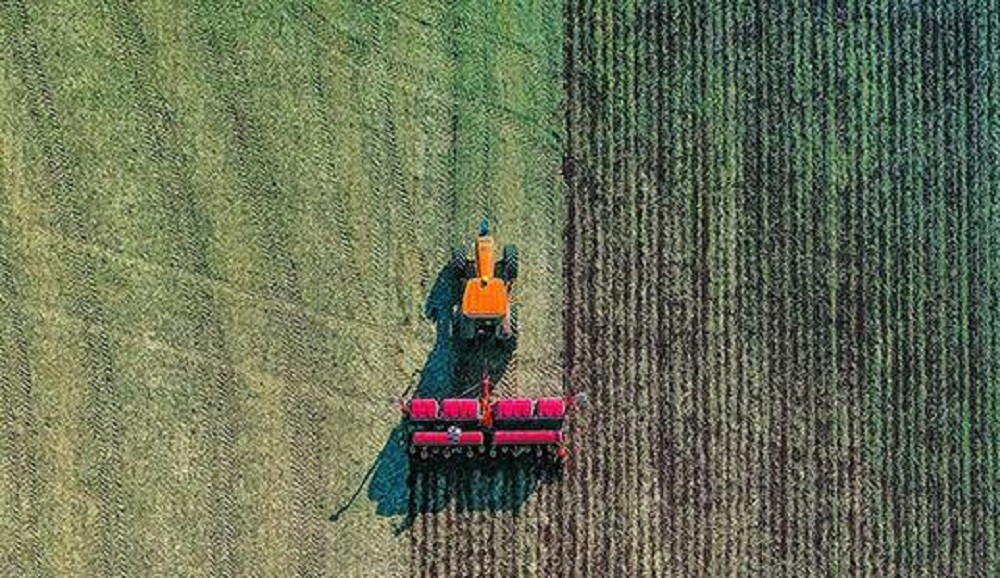Everyone can make small talk about the weather, whether it has been too wet, too dry, too windy, too hot, too cold or too something else.
But what about space weather?
While it seems irrelevant, space weather and solar activity should be a topic of conversation since it can disrupt technology used in agriculture, said Rebecca Bishop, the principal scientist at the Aerospace Corporation.
Bishop said space weather is that which occurs at higher altitudes, much like we have everyday weather close to the surface.
“The sun is also shooting out radiation and charged particles and as it hits the Earth’s magnetic field, it can produce different effects,” said Bishop, speaking recently on Kansas State University’s weekday radio program, Agriculture Today. “The more disturbed the sun becomes, the more likely some of those effects will reach us and our technology systems.”
Bishop said coronal mass ejections, or CMEs, are one type of solar activity where strong eruptions from the sun shoot charged particles (or ‘plasma’) that can take anywhere from 12 hours to a couple of days to reach Earth. Its effects depend on the time of day it hits and the orientation of the Earth’s magnetic field.
“The effects of space weather aren’t always uniform globally,” Bishop said. “It really depends on what the magnetic field is doing at your location. That’s why South America often sees a lot more severe space weather than the continental U.S., because they have a different magnetic field.”
With any weather event, agriculture is always impacted. Space weather specifically affects satellite equipment and transmitting technology.
“The way the global navigation system works is you have GPS satellites that are transmitting a radio frequency (to Earth),” Bishop said. “The ionosphere, which is a layer of charged particles that can affect radio frequency, can scatter, bend or reflect the signals. If the ionosphere is nice and smooth and uniform, the signals come right through without a problem. The moment there’s any sort of turbulence or waves in the ionosphere, the signals don’t get through the ionosphere and never reach GPS receivers on the ground or they’re corrupted by the time they reach the ground.”
K-State precision agriculture economist Terry Griffin says when farmers have technological issues with GPS systems, space weather may be the cause.
“If something’s not working, my first reaction is to unplug, plug it back in, restart it, call the dealer,” Griffin said. “But if it is from atmospheric scintillation where signals are scattered or reflected or prevented from coming through, what may help is just waiting it out.”
Bishop adds that GPS connectivity after a storm could be minutes or hours but not usually days unless it is a once-in-a-lifetime space weather event. Additionally, most ionosphere interruptions occur during the night and rarely during the day because the ionosphere is produced by the sun.
With GPS advancements, agriculture doesn’t stop when the sun goes down.
“We’ve been using GPS for a lot of our field activities such as tillage, for instance,” Griffin said. “Planting would happen during the nighttime, and some operations may do 24-hour shifts because GPS has provided that opportunity.”
During the day, a specific type of solar activity affecting agriculture — solar radio bursts — can create a blackout, Bishop said.
“The source of the space weather determines if it affects a county, state or the entire country,” Bishop said.
The growth of GPS systems in daily tasks means technology is now an integrated part in almost every aspect of human’s daily lives, Bishop said. “Any electronic system probably has something related to GPS, so it’s everywhere,” she said. “We’re moving right now into Solar Max. We didn’t think it would be that strong of a Solar Max, but it is surprising us and it’s picking up.”
Bishop said mankind heightened its dependency on GPS during the last two decades when solar cycles have been fairly quiet.
“Because of our reliance on GPS and GNSS on planter equipment, for example, in the springtime maybe during a Solar Max or some of the events that (Bishop) is talking about, we’re less reliant upon sunlight to do field operations, and our GPS isn’t working,” Griffin said.
At that point, he adds, “I have two choices. Put seeds in the ground that may not be straight, or I may start unplugging things, plugging back in and restarting in hopes of it getting a signal. But if it is something that’s beyond the equipment, I think it’s beneficial to understand what the source may be.”
Bishop added that the beauty of the Earth’s magnetic field is it acts as a shield and prevents most of the harmful radiation from reaching humans.
“It would take a really strong event to have anything that comes really low,” Bishop said. “There’s still some charged particles that do range inside the Earth’s atmosphere but they get captured on the magnetic field lines.”
Producers and others interested can sign up for alerts on the NOAA Space Weather Prediction Center website to be notified when a solar storm is approaching, or when higher activity is expected.
The Aerospace Corporation works with precision agriculture professionals to better understand the end users needs, or the impact of space weather on technology.
Source : Farm Talk

